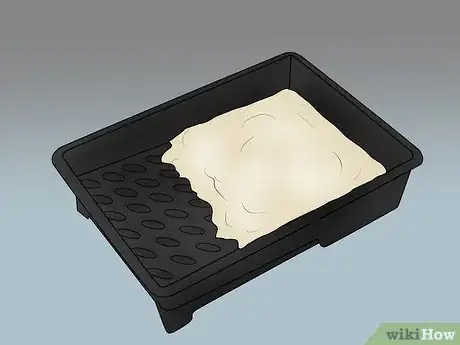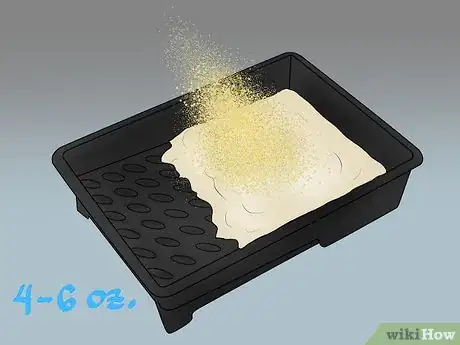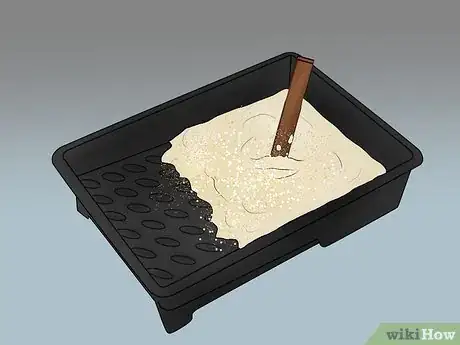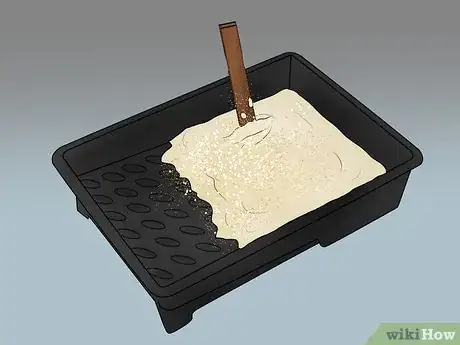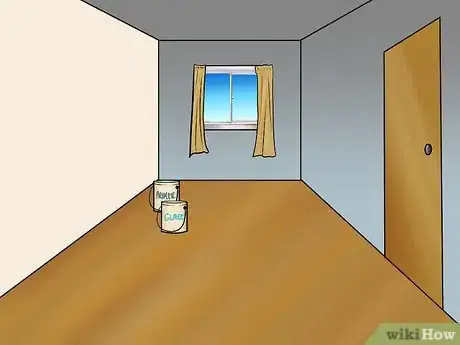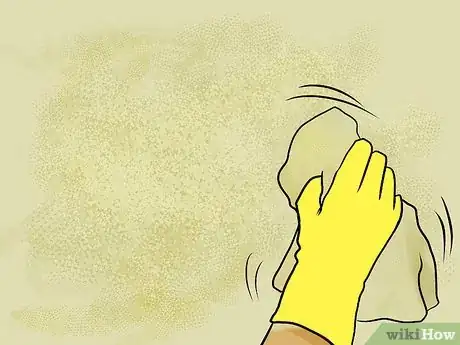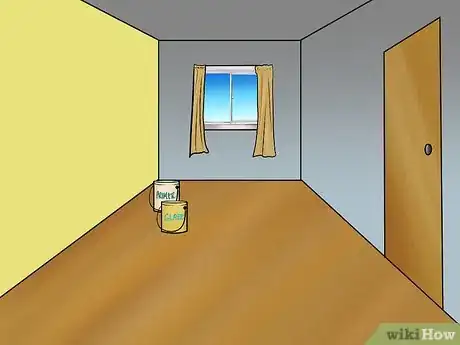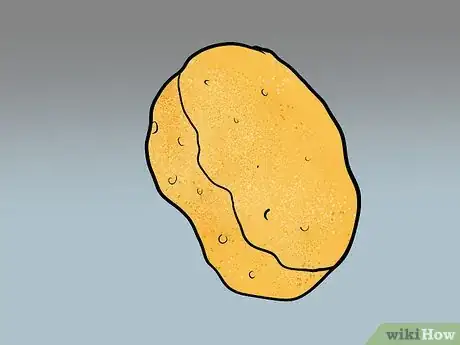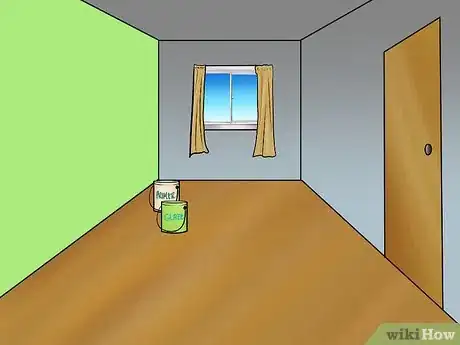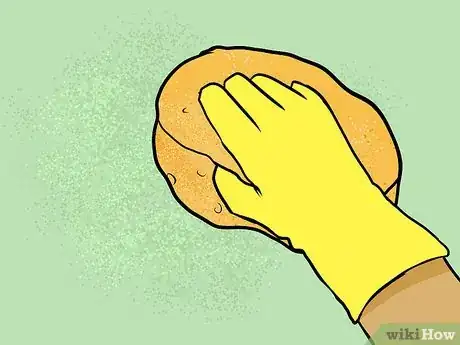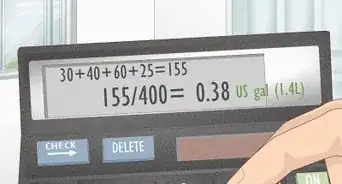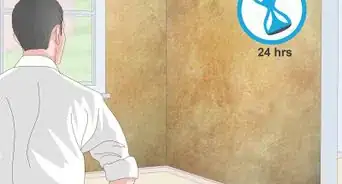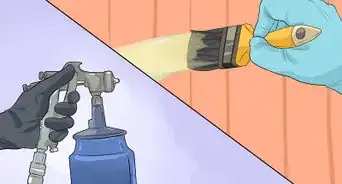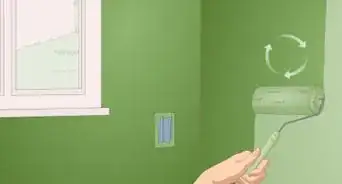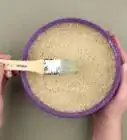wikiHow is a “wiki,” similar to Wikipedia, which means that many of our articles are co-written by multiple authors. To create this article, 11 people, some anonymous, worked to edit and improve it over time.
This article has been viewed 145,094 times.
Learn more...
Textured paint is an alternative to traditional flat paint and is utilized for multiple reasons. Walls with textured paint are lower maintenance because they camouflage dirt and conceal flaws. Textured paint can give the impression of wallpaper without the hassle and textured paint also tends to be stronger than regular paint. Texturing paint can be achieved before the paint is applied as well as during the application process.
Things You Should Know
- Add baking soda or silica sand to paint to easily make the paint textured.
- Apply a base coat of paint and glaze; then, either ball up a rag and press it into the glaze or drag a comb through the glaze.
- Paint a base coat with a shaggy roller, or use a sponge to pat the paint and create a texture.
Steps
Using Baking Soda or Silica Sand
-
1Fill a cup or paint tray with flat latex paint.
-
2Add baking soda or silica sand to the paint. If you're using baking soda, add 1 tablespoon for every 1 cup of paint you're using.[1] . If you're using silica sand, add 4 to 6 ounces (113.3 to 170 g) of silica sand into the paint.Advertisement
-
3Stir the paint with a wooden paint stick.
-
4Add more baking soda or silica sand for a coarser texture.
-
5Repeat the process of stirring before each application. The baking soda or sand will settle on the bottom between applications.
Ragging Technique
Combing Method
Sponging the Wall
-
1Cut up a household sponge into an interesting shape or purchase a sponge with an interesting texture at a craft or paint store.
-
2Apply the base paint as you normally would. (An additional coating of glaze is optional.)
-
3Start in one corner of the wall and press the sponge into the paint.[6] You can twist the sponge or just barely pat the paint depending on your desired effect.
Community Q&A
-
QuestionCan you paint over wallpaper?
 Community AnswerYou can. However, it likely won't look too good, and you run the risk of oversaturating the wallpaper and the glue could give way. Normally wallpaper is removed before painting.
Community AnswerYou can. However, it likely won't look too good, and you run the risk of oversaturating the wallpaper and the glue could give way. Normally wallpaper is removed before painting. -
QuestionWill texture paint over wallpaper?
 Community AnswerIt depends on the thickness of the wallpaper itself and what kind of texture you are going to use on your surface.
Community AnswerIt depends on the thickness of the wallpaper itself and what kind of texture you are going to use on your surface. -
QuestionWhat is silica sand and where do I buy it?
 Community AnswerSilica sand is quartz, technically. You can get it at the hardware store or Amazon, or perhaps the craft store. I've used real sand in paint projects when I was a kid and it worked well to create a sandy, textured surface, so if you have a beach nearby, just go grab a tub of sand from there and experiment with one of those little $2 tester paints from the hardware store. You can even have them colored.
Community AnswerSilica sand is quartz, technically. You can get it at the hardware store or Amazon, or perhaps the craft store. I've used real sand in paint projects when I was a kid and it worked well to create a sandy, textured surface, so if you have a beach nearby, just go grab a tub of sand from there and experiment with one of those little $2 tester paints from the hardware store. You can even have them colored.
Warnings
- Do not buy fast-drying paint or glaze. Texturing paint can take some time, so it is best to have a paint that remains workable for the time required to texture it.⧼thumbs_response⧽
- Do not work in a room that is not well-ventilated well. Paint fumes are unhealthy and can be toxic.⧼thumbs_response⧽
Things You'll Need
- Base latex paint
- Paint roller
- Wooden paint stirrer
- Glaze
- Paint tray
- Silica sand
- Rag
- Sponge
- Comb
- Spray paint
References
- ↑ https://www.delineateyourdwelling.com/baking-soda-and-paint-technique/
- ↑ https://www.youtube.com/watch?v=PZ-XgnFsLNw
- ↑ https://www.youtube.com/watch?v=PZ-XgnFsLNw
- ↑ https://www.youtube.com/watch?v=hFQydfLxd4E
- ↑ https://www.youtube.com/watch?v=hFQydfLxd4E
- ↑ https://www.homedepot.com/c/ah/how-to-sponge-paint/9ba683603be9fa5395fab9019a3613b
- ↑ https://www.diydoctor.org.uk/projects/paintrollers.htm
About This Article
Texturing your paint can give your walls a subtle and unique pattern with little to no extra cost. The easiest way is to mix a few ounces of silica sand with your paint in the roller tray and apply it like normal. Alternatively, apply a base coat of your chosen paint and a coat of glaze. Then, press a balled up cotton cloth or a sponge onto the glaze to leave dotted patterns on the walls. Press harder for a stronger effect or softer for a subtler style. You can also drag a comb over the glaze for a wood-grain look. For more tips, including how to texture your paint with a shaggy roller, read on!
